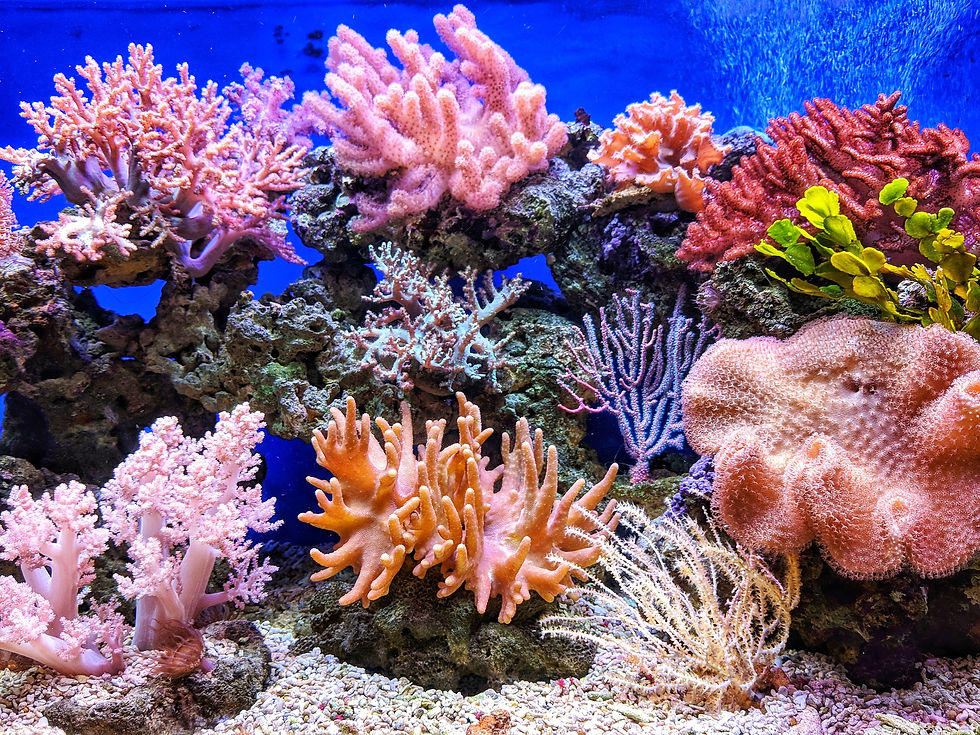Ocean Friendly Changes You Need To Save Our Planet
- Amira Mirza

- Jun 23, 2021
- 4 min read
Updated: Aug 16, 2021
Fashion as a threat to our oceans
Our oceans need your help. Whilst awareness is rising on the threats of plastic to our oceans, the current change being made is minimal. The reduction of plastic straws being used is a great start to helping our oceans, however plastic straws and stirrers make up an estimated 0.03% of contaminated ocean water.
Unknown to many people, fashion is a major contributor to plastic pollution in the ocean. Over one third of all microplastics in our ocean are from synthetic textiles from the fashion industry. This shows why awareness of our clothing’s impact on our oceans is so important. This could promote the ocean friendly changes needed to save our planet.
The process of making clothes, by many brands, is extremely harmful for the environment. This harm is only increasing, with people buying more clothes than ever before, and keeping them for a fraction of the time we previously would.
In most countries our clothes are produced, toxic wastewaters are dumped directly into rivers, harming aquatic life and those living nearby. This eventually reaches our oceans. Additionally, water is contaminated through fertilisers for cotton products, further polluting waters.
Furthermore, washing clothes has a large impact on our oceans. Every time we do laundry, an average of nine million microfibres are released into wastewater. These tiny plastic particles from our clothing go through the sewers and into the ocean, and worst of all, there is currently no effective way to remove them.
Water pollution is only increasing and lacks awareness due to it being an:
“Invisible crisis.” World Bank
What can you do to make a difference?
To reduce the harm made to our oceans by the fashion industry, there are various steps you can take.
Firstly, we must simply buy less. In the UK, we buy more clothes per person than any other European country.
To show the growth of our consumption, we buy five times more than our grandmothers bought. Buying so many clothes, to wear minimal times and throw away, is unsustainable. This increased demand for clothes, means more unnecessary toxic wastewater is entering our oceans.
Whilst we may think buying clothes makes us happy, there are ways reduced consumption can be made easier. Buying better quality clothes can help us keep our clothing longer, reducing the need to buy so much. Whilst fast fashion, and cheap products are tempting, they should be avoided; and hopefully over time this will push brands to improve their quality.
It is also important for us to think twice before throwing away clothes and repurchasing more. Instead we can attempt to repair clothing, donate, or put into textile recycling bins, stopping these microplastics entering our oceans.
Buying second hand from charity shops or apps such as Vinted and Depop can similarly contribute to saving our oceans, whilst helping you to save money! Another good option is to rent clothing. This is particularly useful for clothing you will not wear often, such as occasion dresses or pregnancy clothing.
Washing clothes after every wear can sometimes be unnecessary. The average household does almost 400 loads of laundry per year, contributing to the microfibres in the ocean, and consuming 60,000 litres of water. Washing clothing, other than pants and socks, only when they look dirty would massively help this problem.
Ocean friendly brands helping to save our planet
Alternatively, buying clothes from sustainable brands can help to save our oceans. More fashion brands are beginning to consider the environmental impact of their production.
Patagonia works hard to protect our environment. They donate 1% of all sales to ‘One Percent for the Planet’, co-created by Patagonia’s founder. Also, the oceans are of prime importance. Patagonia provides grants to organisations that protect and clean our oceans including All One Ocean and Ocean Blue Project.
Whilst donating to save our planet, Patagonia ensures their brand is not contributing to the problem. Patagonia makes packaging that is recyclable, and discarded fishing nets dangerous to marine life, collected from South American coastlines, have been repurposed into hard goods and textiles for products.
Everlane is also key brand for protecting our oceans. Everlane clothing is built to last for years, helping avoid today’s throw-away culture. Also in 2018, they pledged to completely eliminate the use of new plastics from its supply chain, stores, packaging, and offices by 2021.
Instead, Everlane will use recycled plastics to abolish their contribution to plastics in the ocean. This is evident through the launch of new collection ReNew, which consisted of coats, jackets, jumpers, and accessories for men and women, made using over three million renewed plastic bottles.
Oceans cover 71% of the globe and it is so important these are protected to save our planet. The ocean is the largest ecosystem on earth and is the planet’s life support system. By saving the oceans we are saving the earth.
This is why it is vital to make these ocean friendly changes needed to save our planet.



Comments